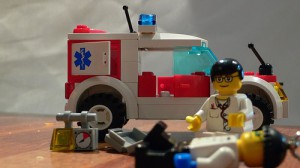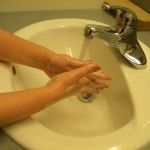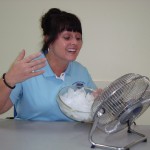by Kristin Jackson | Mar 17, 2014

The deadline to enroll in health insurance through healthcare.gov is March 31, 2014
UF IFAS Extension Northwest District cares about you having all the facts necessary to use research based information to make informed choices for you and/or your family. One important choice coming up for almost 70,000 uninsured adults in the Big Bend (Gadsden, Franklin, Jefferson, Leon, Liberty, Madison, Wakulla, Taylor and Dixie Counties) is the decision to obtain health insurance coverage. The deadline to enroll in health insurance through healthcare.gov is March 31, 2014.
Research estimates that the majority of the uninsured are working families with low to moderate incomes, so some individuals and families are unable to pay for health care insurance. The Affordable Care Act gives individuals that are uninsured or underinsured the chance to obtain health insurance or to obtain better insurance. Due to the cost of insurance some low to moderate income individuals may qualify for an exemption, but there are still financial implications for not having health insurance coverage. Five important financial implications of not having insurance are:
1) Out of pocket and are often billed at a higher rate than insured.
2) Financial strain from medical bills and out-of-pocket cost.
3) Inability to pay for their or their family member’s medical care.
4) Compromised credit score.
5) Inability to obtain assets (such as a car or house)
Individuals and families without insurance and who do not have an exemption, will have to pay a penalty. The fine in 2014 will be the greater of $95 or 1% of your yearly household income. The penalty is expected to increase in 2015 and beyond.
If you have additional questions about the Affordable Care Act and would like free research based information contact your local UF/IFAS County Extension Office. Many local UF/IFAS County Extension offices offer information on the Affordable Care Act. You can find your local UF/FAS Extension Office by visiting http://solutionsforyourlife.ufl.edu/map/ or by calling the United Way’s 211 number.
References:
Kaiser Family Foundation. (2013). Key Facts about the Uninsured Population. Retrieved 3 March 2014 from http://kff.org/uninsured/fact-sheet/key-facts-about-the-uninsured-population/
Robert Wood Johnson Foundation. (2013). County Health Rankings & Roadmaps Health Factors Uninsured. ? Retrieved 3 March 2014 from http://www.countyhealthrankings.org/app#/florida/2013/measure/factors/85/data/sort-0
U.S. Centers for Medicare & Medicaid Services. (N.D.) What if Someone Doesn’t Have Health Coverage in 2014? Retrieved 3 March 2014 from https://www.healthcare.gov/what-if-someone-doesnt-have-health-coverage-in-2014/
by Ginny Hinton | Dec 4, 2013
Normal
0
false
false
false
EN-US
X-NONE
X-NONE
/* Style Definitions */
table.MsoNormalTable
{mso-style-name:”Table Normal”;
mso-tstyle-rowband-size:0;
mso-tstyle-colband-size:0;
mso-style-noshow:yes;
mso-style-priority:99;
mso-style-parent:””;
mso-padding-alt:0in 5.4pt 0in 5.4pt;
mso-para-margin:0in;
mso-para-margin-bottom:.0001pt;
mso-pagination:widow-orphan;
font-size:11.0pt;
font-family:”Calibri”,”sans-serif”;
mso-ascii-font-family:Calibri;
mso-ascii-theme-font:minor-latin;
mso-hansi-font-family:Calibri;
mso-hansi-theme-font:minor-latin;}

Wash your hands with soap and water for at least 20 seconds to reduce the spread of germs.
It seems like such a simple solution. Wash your hands to keep yourself well during this cold and flu season. Unfortunately, even though most people know how important hand washing is, many still don’t follow important hygiene procedures. What do we need to do – and teach our kids to do – to stay well this fall and winter? The answer is: wash frequently and correctly.
Our bodies are covered with bacteria. Some cause disease, while others are actually helpful. Some stay on our skin all the time, while we pick up others through contact with objects such as doorknobs, handles, keyboards, and phones. Those “transient” bacteria and viruses that we pick up can live up to five hours on dry surfaces. Touch your cell phone or scratch an itchy eye and they’re now living in your body!
A study conducted by Russell Research for the American Cleaning Institute® (www.cleaninginstitute.org) found that, even though an overwhelming 97% of parents and children agree that hand washing is one of the most important things they can do to keep from getting sick, they don’t always follow through on that belief. At home, only 66% of parents say they have taught their children to spend 20 seconds washing their hands and a full 33% of parents admitted to not always washing their own hands after leaving the restroom. While many parents have discussed the importance of hand washing with children, the research indicates that they must lead by example and prompt kids every day if the message is going to stick.
The way you wash your hands is just as important as the fact that you wash them at all. Just rinsing them for a couple of seconds and then drying them off helps very little. Soap is important to break up grease and dirt, which can hide thousands of germs. Antibacterial soap isn’t necessary unless you’re a surgeon. Any soap that lathers will work. Wet your hands, soap up, and scrub your hands together vigorously. It’s the friction you create that removes the viruses. Take your time to be sure you’ve removed all the germs. The CDC recommends at least 20 seconds of hand washing. Although that doesn’t sound like a long time, it’s probably much longer than you think. Time yourself the next time you wash your hands. Watch your child to make sure he or she is practicing good hygiene. Remind him or her daily about hand washing because it matters. Get your family in the habit of washing their hands before and after caring for someone who is sick, before and after treating a cut or wound, and after blowing their nose, coughing, or sneezing. Lessons learned at home last a lifetime!
Source: http://www.cdc.gov/handwashing/
by Ricki McWilliams | Nov 16, 2013
 The Season of Hallothanksmas is upon us. Yes, I know what you’re thinking: treats, meats, and delicious eats. But let’s shift our way of thinking. What if we turn our focus to family, friends, and making great memories? Here are three things to think about this holiday season:
The Season of Hallothanksmas is upon us. Yes, I know what you’re thinking: treats, meats, and delicious eats. But let’s shift our way of thinking. What if we turn our focus to family, friends, and making great memories? Here are three things to think about this holiday season:
1. Portion control – Have you noticed how portion sizes keep getting bigger with the option to “super-size?” Some portion sizes have increased so much that they now equal the amount recommended for the entire day. With this growth have come increases in waistlines and body weight. Start with figuring out how big your portions really are. Pour/place in a dish the amount you would normally eat then use a measuring cup to find out how much you are actually eating. Take the Portion Distortion Quiz now.
Basic guidelines when measuring portions:
1 cup = baseball
½ cup = light bulb
1 oz or 2 tbsp = golf ball
1 tbsp = silver dollar
3 oz chicken or meat =deck of cards
3 oz fish = checkbook
2. Some easy ways to keep your commitment to healthful eating: Pack your shopping cart with plenty of fresh vegetables like sweet potatoes, winter squash, broccoli, carrots, and green beans. Apples, cranberries, and pears combine easily for a tasty salad, fruit crisp, or topping for the turkey. Reduce fat and calories without sacrificing the taste with these quick substitutions: two egg whites for one egg; low-sodium, fat-free broth in your mashed potatoes; cutting back on added butter or margarine; applesauce for oil, margarine, or butter when baking. Use fat-free yogurt, sour cream, and whipped topping for dips, sauces, and pie toppings. Try sliced almonds in place of fried onion rings for a crunchy topping. Replace regular with reduced-fat or low-fat cheese for salads and casseroles. Substituting ingredients can change the texture of the finished product so be sure to start with small changes.
3. Going to a gathering? With a little preparation, you can still keep off the extra holiday pounds. If you plan on treating yourself later, start your day with a small meal that includes whole grains, fruit, low-fat or fat-free dairy, and protein like eggs, ham, or peanut butter. Don’t starve yourself beforehand. Rather, eat a small, lower-calorie meal or snack so you don’t overdo it at the party. Choose carefully and decide among foods you definitely will eat, those you will sample, and those you will skip. Don’t rush to eat. Socialize and settle into the festivities before you eat. Move your socializing away from the buffet or appetizer trays so you don’t nibble unconsciously.
Sources: www.eatright.org; http://myplate.gov/
by Dorothy C. Lee | Aug 22, 2013

Fuel your brain with a healthy, balanced breakfast.
Waking up is hard enough to do, but it is especially difficult for people who are not “morning” people, who would like to avoid that time of day altogether, and who don’t generally want breakfast. Nevertheless, the sun is still going to rise, people still have to get up, and breakfast still is the most important meal of the day. Because traditional meals play a significant role in providing daily recommended levels of essential nutrients, nutritionists often cite breakfast as the day’s most important meal and as the foundation of healthy eating habits.
Despite these recommendations, millions of Americans, in the rush to get to work, school, and other activities, often skip breakfast, thinking there is not enough time to prepare and eat a good well-balanced morning meal. Studies show that eating habits developed during childhood have the potential to last a lifetime, and children who tend to omit breakfast will likely continue this dietary habit well into adulthood. Studies also have shown that eating breakfast is associated with improved strength and endurance throughout the day and a better attitude toward school or work.
The role of breakfast in helping children perform at peak levels in the classroom was first documented more than 45 years ago at the University of Iowa Medical College. Researchers found that children who skipped breakfast had trouble concentrating at school and often became inattentive, irritable, restless, and fatigued by late morning—all behaviors counterproductive to learning. The behaviors were linked to low blood sugar levels which had not been replenished by a morning meal.
Breakfast helps to replenish blood glucose levels, which is important since the brain itself has no reserves of glucose, its main energy source. Sustained mental activity requires a large turnover of brain glucose and its metabolic components. After a fast of eight or nine hours, refueling at breakfast will make you feel and perform better during the day.
Here are some quick tips to help you avoid the temptation to be a breakfast skipper:
- No time? Build a breakfast around foods that are ready-to-eat or take little preparation time. For example: fresh and canned fruits; milk; yogurt; cheese; cottage cheese; ready-to-eat cold cereals; fruit smoothies; and instant breakfast mixes.
- Take it to go. Try celery stuffed with a meat or cheese spread or peanut butter; dried fruits; vegetable juices; or yogurt.
- Perk up cereals. Top cereals with fruit or stir chopped nuts, such as walnuts or almonds, into cooked cereals. Try adding dried fruit or granola.
- Not hungry yet? Drink juice or a fruit smoothie. Something is better than nothing! Have some bread or crackers later in the morning, then drink some milk and eat some cheese, an egg, or some peanut butter.
- Don’t skip breakfast if you’re on a diet. There is no evidence that skipping meals will help you lose weight. In fact, studies show that most people who skip breakfast tend to eat more later in the day. Some may even unintentionally select more calorie-dense foods.
Balanced breakfast choices can help provide the healthy edge needed for optimal physical and cognitive performance for children as well as adults. For those who don’t yet eat breakfast, it’s never too late to wake up to a healthy start!
For more breakfast suggestions, check out Breakfast Ideas and Breakfast on the Go.
Reference: United States Department of Agriculture, Human Nutrition Information Service
by Angela Hinkle | Aug 14, 2013
Brutal … Sizzling … Searing. These words are often used to describe the summer heat in our Southern region of the U.S. While staying cool in the summer heat is a matter of comfort for most of us, for many folks, excessive exposure to heat can be very dangerous. Here are some easy-to-follow tips to stay cool and prevent heat-related illnesses during the hot summer months.

Create a cool breeze with a fan blowing over a bowl of ice.
- Drink and eat plenty of fluids. Drink lots of cool water to increase your fluid intake regardless of your physical activity level. For something different, add a wedge of lemon or lime. Watch out for sugary drinks that can add up to unnecessary calories. Do avoid very cold drinks, though, as they can sometimes cause stomach cramps. Instead of hot foods, eat lighter summer fare which includes frequent small meals or snacks containing low fat dairy products or cold fruits and vegetables. Try starting the day off with peaches, plums, melons, pears, and cooling citrus. Include salads in your diet. Leafy lettuce and summer greens, cucumbers, and corn on the cob in salads are a tasty way to stay cool since these foods contain a significant amount of water. Fill ice cube trays with fruit and 100% juice and freeze for a tasty cooling treat that is both nutritious and delicious.
- Wear lightweight, loose-fitting clothing. Choose light-colored clothes, since they reflect more rays than dark colors do. In the hot sun, wearing a wide-brimmed hat will help to keep your head cool. Wear cotton rather than synthetic fabrics. Since cotton is absorbent, it dries quickly and wicks away the sweat. Avoid shoes that trap in heat and sweat.
- Use a buddy system for work and play. When you are working in the heat, monitor your coworkers’ condition and have someone do the same for you. For information on keeping hydrated in hot working environments,check out Hydration in Hot Working Environments. If you are over 65 years of age, have someone check in on you twice a day. If you know anyone in this age group, check on them at least twice a day. Run through the sprinklers with friends like when you were a kid – or start a water balloon fight. Who cares what the neighbors think?
- If you do not have air-conditioning, try to spend at least parts of your day in a shopping mall, movie theater, public library, or other public space that is cool. Chill down a fan one more notch by putting a bowl of ice in front of the fan to ensure extra cold air. Try storing lotions or cosmetic toners in the refrigerator to use on hot, tired feet.
- Finally, if the heat is unbearable, stay indoors when you are able and avoid activities in direct sunlight or on hot asphalt surfaces. Pay special attention to infants, the elderly, and anyone with a chronic illness, since they may dehydrate easily and be more susceptible to heat-related illnesses. Certain medications also can increase sensitivity to the heat; check with your doctor or pharmacist to see if you need to stay out of the sun. Don’t forget that your pets need protection from dehydration and heat-related illnesses, too. For answers to Frequently Asked Questions about Extreme Heat, visit http://www.bt.cdc.gov/disasters/extremeheat/faq.asp.
This summer, don’t get too heated – chill out!
by Ricki McWilliams | Jul 29, 2013
 Can you believe it ~ we are half way through the summer season! Summertime isn’t a time to worry about the children being bored but it’s the time to enjoy some good quality time with family. Outdoor family fun can be done on any budget while helping everyone stay fit and healthy.
Can you believe it ~ we are half way through the summer season! Summertime isn’t a time to worry about the children being bored but it’s the time to enjoy some good quality time with family. Outdoor family fun can be done on any budget while helping everyone stay fit and healthy.
First, gather the family and have every member of the family write down their favorite activity. Second, look at the family’s ideas and compare them to what’s available in your local area such as: local parks, community pools, state forests and summer specials at area businesses for family-friendly events. Last, use the information that you collect to create a summer family “bucket list” and start moving.
Budget friendly activities for the family can include: walking, hiking, swimming, bicycling, tennis, kayaking (paddle sports) volleyball and bowling. Even activities such as gardening, camping, fishing, horse backing riding and boating can lead themselves to fun times and lots of movement. If you are picnicking don’t forget the Frisbee, softball or horseshoes. Get original and grab a piece of chalk and a rock to create some hop-scotch fun (add bubble wrap for additional entertainment). Summer family fun is limited only by your imagination.
Physical activity is any body movement that uses energy. People of all ages, shapes, sizes and abilities can benefit from physical activity. Being physical active can improve strength, flexibility, weight loss and/or maintenance, stress and energy levels as well as reduce the incidence of heart disease, diabetes, high blood pressure, high cholesterol and stroke.
Physical activity is the key to staying healthy. The Centers for Disease Control and Prevention have set the following guidelines:
- Children and adolescents (ages 6-17) should do 60 minutes (1 hour) or more of physical activity each day.
- Adults (ages 18-64) need at least 2 hours and 30 minutes (150 minutes) of moderate-intensity aerobic activity (i.e., brisk walking) every week and muscle-strengthening activities on 2 or more days a week that work all major muscle groups (legs, hips, back, abdomen, chest, shoulders, and arms). (If you’re 65 years of age or older, are generally fit, and have no limiting health conditions you can follow these same guidelines.)*
Fitting regular exercise into your daily schedule may seem difficult at first but it’s easier than you think. Spread it out and break your activity into attainable segments. Ten minutes at a time is fine. Try going for a 10-minute brisk walk, 3 times a day, 5 days a week. This will give you a total of 150 minutes of moderate-intensity activity.
*When to Check With Your Doctor: Doing activity that requires moderate effort is safe for most people. But if you have a chronic health condition such as heart disease, arthritis, diabetes, or other symptoms be sure to talk with your doctor about the types and amounts of physical activity that are right for you.
See this print-friendly brochure for examples of physical activity.
Source: Centers for Disease Control and Prevention – Physical Activity
Remember: Play, Don’t Lay
If you would like to contact Ricki McWilliams for more information, you can reach her at the UF/IFAS Extension Walton County Office (850) 892-8172.






